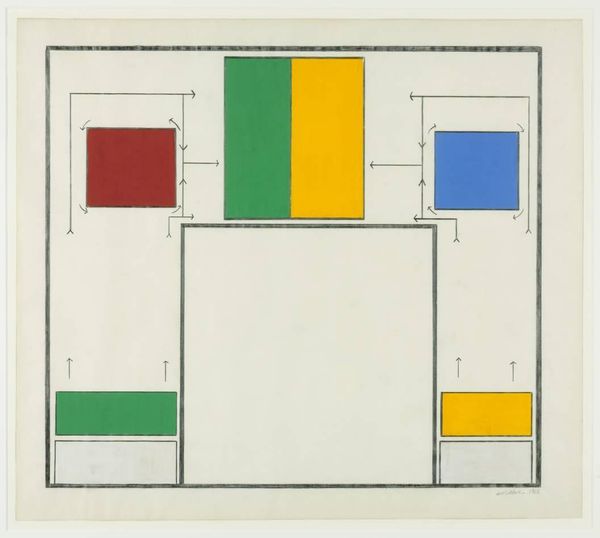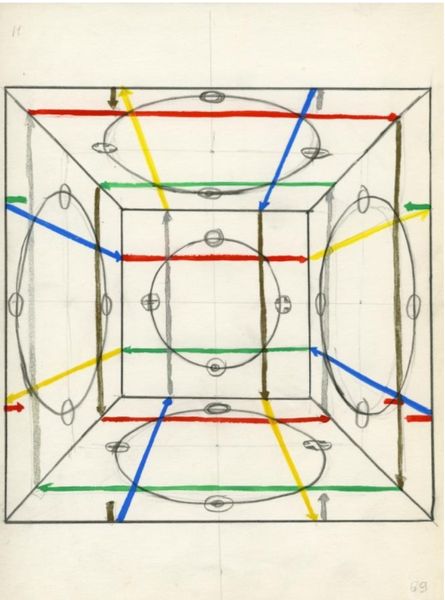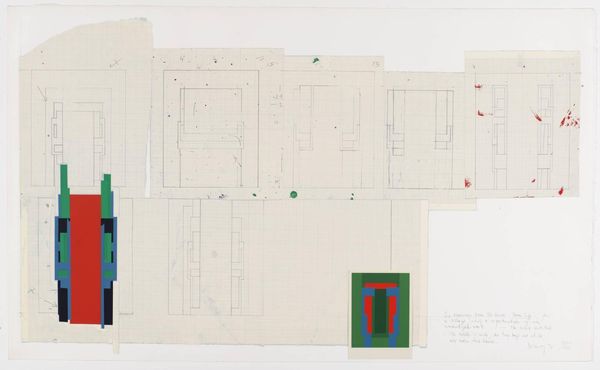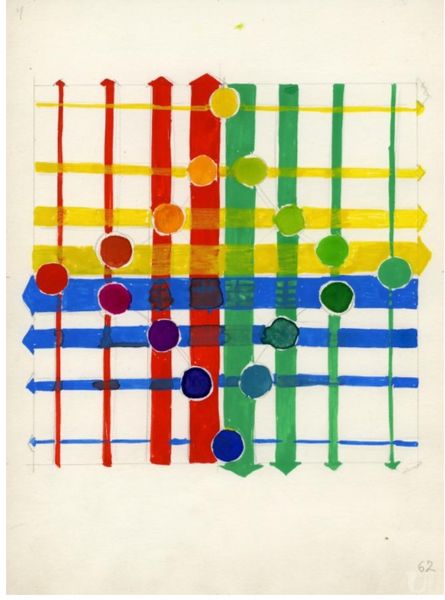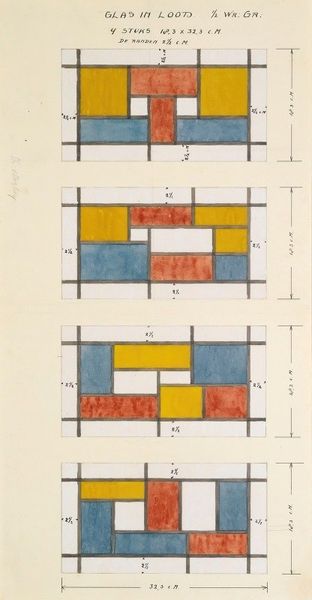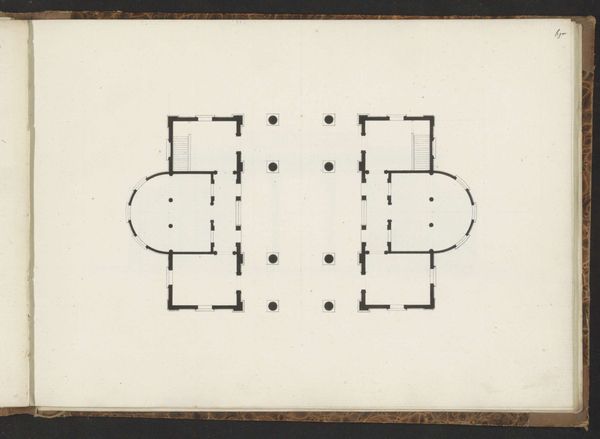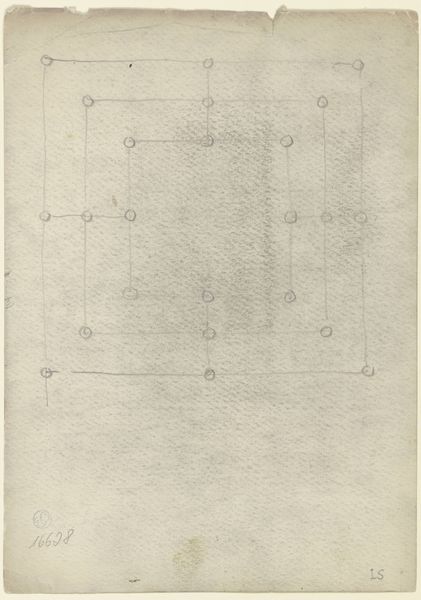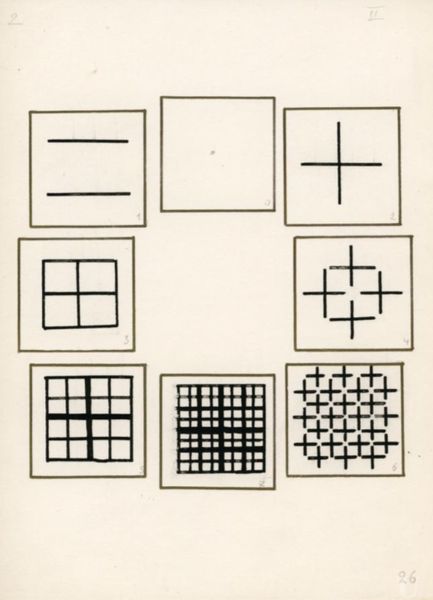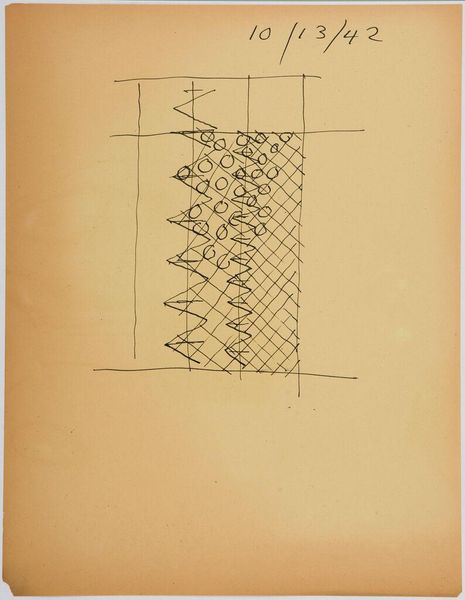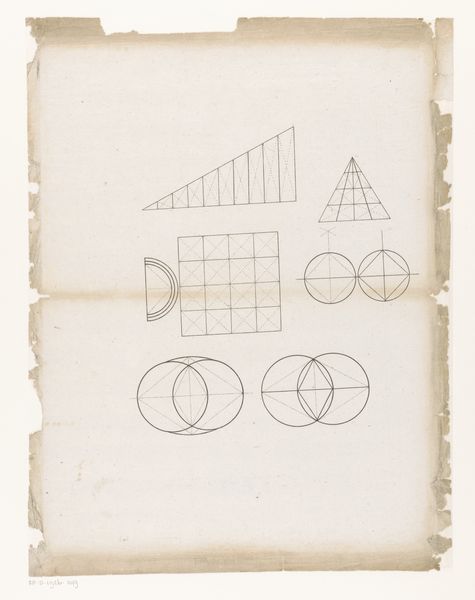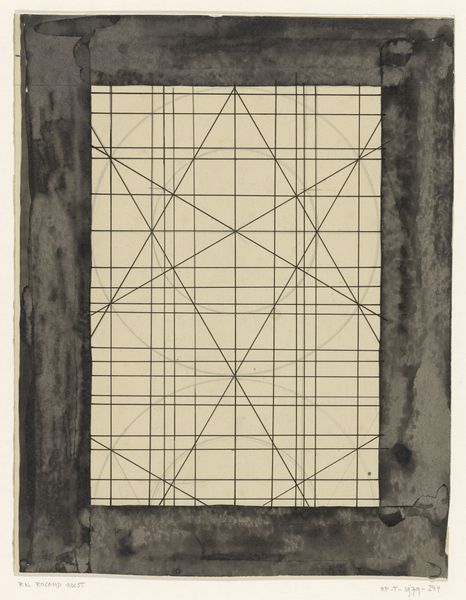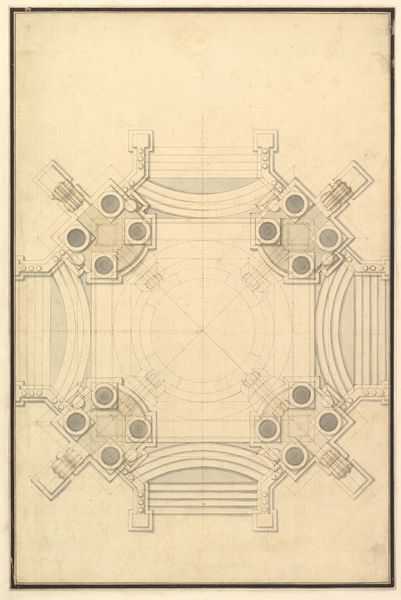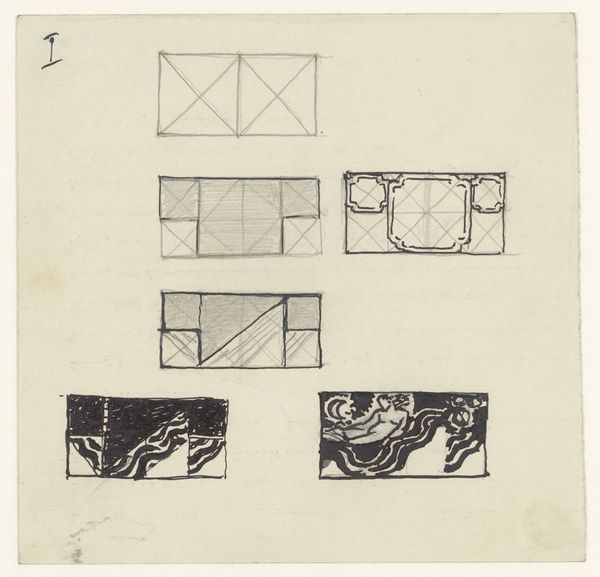
drawing, architecture
#
architectural sketch
#
architectural and planning render
#
drawing
#
architectural diagram
#
architectural plan
#
retro 'vintage design
#
geometric
#
elevation plan
#
architectural section drawing
#
architectural drawing
#
architecture drawing
#
architectural proposal
#
architecture
Copyright: Valerii Lamakh,Fair Use
Curator: This drawing, titled "The Fourth 'Book of Schemes'. Album #2, the First Folder," comes to us from Valerii Lamakh, dating back to 1978. Editor: It immediately strikes me as a deconstruction of a cube, maybe a building or even a city block. The grid-like composition and the simple geometric shapes feel almost like a blueprint. Curator: You’re perceptive. Lamakh was indeed playing with architectural concepts. In Soviet Ukraine at this time, architecture, urban planning, and design were all potent vehicles for ideology. Works like these were deeply engaged in visualizing the future and its social structures. Editor: So, the choice of a simplified, almost childlike, style might be deliberate, a way to subvert the imposing grandeur usually associated with Soviet monumentalism? Curator: Exactly! The rudimentary shapes and colors offer a contrasting, perhaps even satirical, take on the utopian ideals prevalent in much of Soviet design. The circles within squares connected by directional lines could suggest connectivity, the flow of resources, or even the movement of people. Editor: It makes you wonder if these vibrant colors, which stand out against the subdued backdrop, carry a subversive charge, acting as visual disruptions within a system meant to promote uniformity. Curator: It's definitely a space for interpretation. These graphic arrows make me think about circulation. Editor: But do the shapes also stand in contrast with the history of Soviet architecture itself, like the avant-garde architectural proposals which were never realized because of Soviet ideology? The unconstrained format is at odds with the restrictive official styles. Curator: In a time where artistic expression was tightly controlled, it seems Lamakh found ways to question and redefine those boundaries within seemingly harmless schematics. This really demonstrates how something seemingly technical, such as an architect's sketches, may speak of very deep cultural currents and concerns. Editor: It is incredible to observe the level of cultural resistance one can embody through their architectural vision. Curator: I agree. This work remains powerful in the questions it evokes regarding power, place, and potential within restrictive social contexts.
Comments
No comments
Be the first to comment and join the conversation on the ultimate creative platform.
